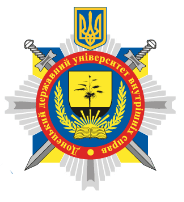PRE-CRIMINAL BEHAVIOR OF MINORS (CHILDREN) WHO COMMIT CRIMINAL OFFENSES
DOI:
https://doi.org/10.32782/2523-4269-2023-83-23-28Keywords:
child, behavior, teenager, cause, condition, violence, cruelty, prevention, prevention.Abstract
The article highlights the problems of pre-criminal behavior of children, which causes them to commit lawful and unlawful forms of behavior, identifies and characterizes three types of pre-criminal behavior of child offenders. It is noted that the causes of the child's socio-negative development come from the conditions characterizing the family's financial situation, the culture of intra-family relations, the pedagogical competence of parents, etc. The study of delinquent children revealed that teenagers who have difficulties in social adaptation are prone to join antisocial groups, and the closest environment of the teenager is the bearer of certain life values and norms of behavior. It was established that the problem of physical and mental health of teenagers is closely related to the problems of childhood alcoholism and drug addiction. It is emphasized that the influence on the level of legal and moral awareness of children is exerted by mass media, and it is the “pollution” of the latter with scenes of cruelty, violence, pornography, denial of traditional cultural values, and distortion of key historical events that causes enormous damage to children's psyche. Three types of precriminal behavior are distinguished, where the first type is characterized by the stage of precriminal lawful behavior, and the second and third are characterized by the stage of precriminal misconduct. The mechanism of precriminal behavior includes the child, the microenvironment, antisocial relationships, degradation and its connection with the criminal environment, and an illegal act. Analysis of these indicators in relation to representatives of the first, second and third types allowed us to reveal the growth of negative trends for each subsequent one. However, this regularity is not final, since the commission of a criminal act may be preceded by a stage of pre-criminal misconduct. It is emphasized that prevention measures at the stage of pre-criminal misconduct do not have direct legal regulation, and therefore the authors proposed a preventive system at the general social, special criminological and individual preventive levels, by subjects of general and special prevention. implementation of prevention measures at such criminological levels will contribute to systematicity, determine a holistic approach to the problem, cover the full impact on the child, and effectiveness.
References
Меркулова Ю.В. Акцентуації характеру як передумова втягнення дітей у злочинну діяльність. Вісник Одеського ін-ту внутр. справ. 2005. № 1. С. 135–137.
Антонян Ю.М. Психологічне відчуження особистості й злочинної поведінки: генезис і профілактика дезадаптивних злочинів : монографія. Єреван : Айастан, 1987. 206 с.
Кримінологія : підручник / О.М. Джужа, В.В. Василевич, В.В. Чернєй, С.С. Чернявський та ін. ; за заг. ред. В.В. Чернєя, О.М. Джужі. Київ : ФОП Маслаков, 2020. 612 с.
Мироненко В.П. Злочинність дітей як наслідок неналежного сімейного виховання. Наук. вісн. Нац. акад. внутр. справ України. 2000. № 1. С. 118–124.
Юзікова Н.С. Злочинність неповнолітніх: особливості, сучасні тенденції та заходи запобігання і протидії їй : монографія. Дніпро : Біла К.О., 2016. 510 с.
Герасименко Л.В. Особливості детермінації злочинної поведінки дітей. Наук. вісн. Нац. акад. внутр. справ України. 2006. № 2. С. 130–135.
Тарарухин С.А. Преступное поведение: социальные и психологические черты : монография. Киев, 1984. 220 с.
Бандурка І.О. Діти, сім’я, злочинність неповнолітніх: взаємозв’язок : монографія. Харків : Золота миля, 2014. 280 с.
Про органи і служби у справах дітей та спеціальні установи для дітей : Закон України від 24 січ. 1995 р. № 20/95-ВР / Верховна Рада України. URL: https://zakon.rada.gov.ua/laws/show/20/95-%D0%B2%D1%80#Text.
Женунтій В., Біленчук П. Регламентація індивідуальної профілактики правопорушень. Право України. 1998. № 4. С. 41–45.





